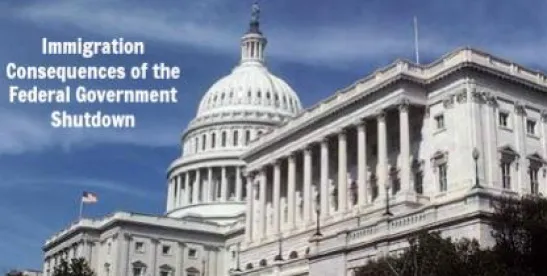Senators Graham (R-SC), Rounds (R-SD), and Cornyn (R-TX) introduced the “Immigrant Investor Program Relief Act” (S. 2778, the Act) on November 5, 2019, proposing long-overdue improvements to modernize the EB-5 program in alignment with industry and market principles. The Act reflects a fair compromise between rural and urban stakeholders, providing substantial market advantages to rural and urban distressed areas while providing opportunities for “downtown” projects.
Major programmatic provisions under the Act:
Duration of Reauthorization – The program’s authorization is extended for six years through Sept. 30, 2025.
Targeted Employment Area (TEA) Definitions
Rural Area definition: The term “‘rural area” means any area that:
-
is outside the boundary of any city or town with a population of 20,000 or more people; and
-
is outside a metropolitan statistical area; or
-
is within any census tract that is greater than 100 square miles in area and has a population density of fewer than 100 people per square mile.
Urban Distressed Area Definition: TEAs are limited to a single-census tract designated by the U.S. Treasury Department as a “Qualified Opportunity Zone,” as per the Tax Cuts and Jobs Act.
Investment Amounts
-
Establishes and maintains a $100,000 differential between the two investment levels.
-
New minimum investment level for TEAs is $1,000,000.
-
New non-TEA amount is $1,100,000.
-
These levels are indexed to inflation going forward.
TEA Set-Asides
-
15% of visas for Rural.
-
15% of visas for Urban Distressed.
-
Unused visas roll over annually at the end of each year to general visa pool for access by all projects in the immediately following year.
-
The set-asides apply immediately to new I-526 petitions filed after enactment, but they cannot be applied retroactively towards petitions that were pending as of the date of enactment.
Transition Rules to New Program Requirements – 90 days after date of enactment the new law takes effect. Individual I-526 petitions that were pending up to the date of enactment are grandfathered and not subject to new investment amounts. Pending petitions rejected after enactment and re-filed would be subject to new investment amounts.
Backlog Relief and Suggested Additional Revenue Source – Advance Parole and work authorization.
-
All pending applicants in queue (approximately 30,000) should have the option to pay a fee to enable the individual and derivatives to travel to the U.S. and obtain work authorization if they have an approved I-526 and have been waiting for three years.
-
The revenues raised by the EB-5 program improvement fee/backlog fee should be maintained separately for use by Congress for programs deemed in the national interest.
-
All new Investor Petitions would be required to pay an additional $50,000 that would go into the new fund.
Sovereign Wealth Funds (SWF) – No bar on SWF capital in projects also funded by EB-5 capital.
Premium processing for Filed Cases 120 days – Available for both Investor and Project – $50,000.
Significant New Revenue Sources for Congress and the Agency – $50,000 program improvement fee, premium processing.
Integrity Measures to Bolster National Security and Fraud Deterrence
-
DHS provided with the authority to conduct criminal background checks and obtain biometric information from individuals involved in the regional center program.
-
Establish new authority for DHS to debar individuals, and suspend or terminate regional centers, based on program non-compliance.
-
Clarify the authority of DHS to deny or revoke immigrant investor petitions for reasons including fraud, misrepresentation, or national security concerns.
-
Establish an EB-5 Integrity Fund to provide rigorous program oversight, which would be funded by regional center program participants.
-
Create thorough annual reporting and accounting requirements for regional center operators.
-
Enforce strict new requirements for third-party promoters marketing or promoting regional center investment projects.
-
Provide DHS with improved investigative tools to ensure that an investor’s funds are derived from legitimate and lawful sources.
-
Provisions to ensure that USCIS engages in a proper and non-preferential way with any person or entity involved in the EB-5 program.
-
CFIUS Reform compliance for covered transactions as per the Foreign Investment Risk Review Modernization Act (FIRRMA).



 />i
/>i

